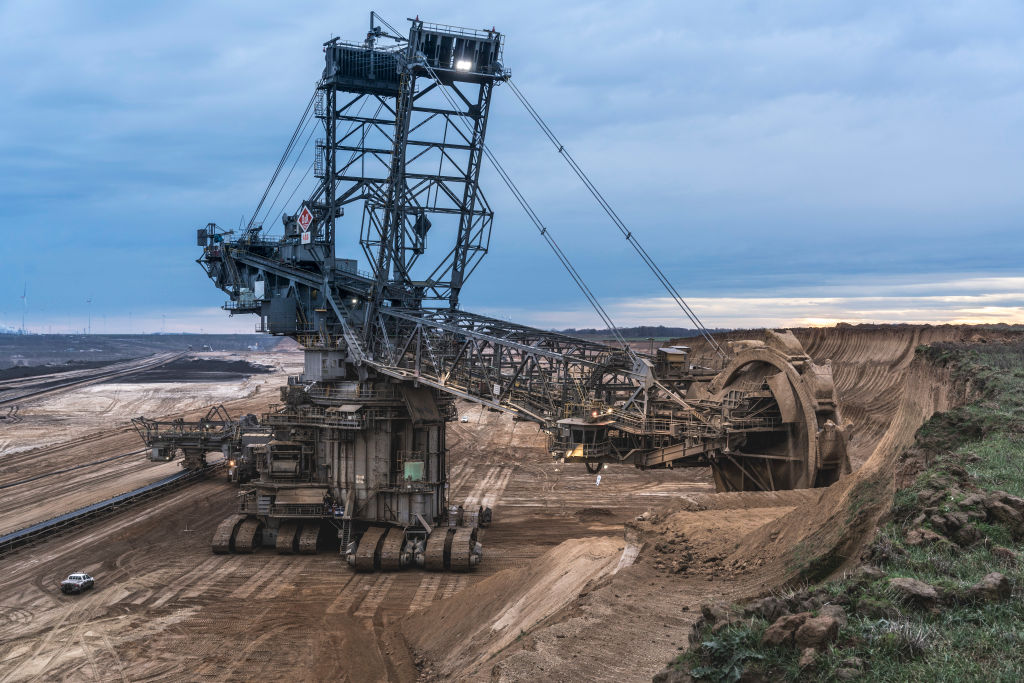A large area of Reinhardswald, an ancient German forest featured in the fairy tales of the Brothers Grimm, is being partially cut down in favour of 241-metre tall wind turbines.
Following a months-long construction freeze, administrative courts have allowed heavy machinery to raze parts of the forest, including some trees that are more than 200 years old.
Around 120,000 trees in the 200km² mountainous woodland in the Weser Uplands in the district of Kassel, Hesse, are said to have been condemned to the axe.
The destruction comes at the request of the Green Party, citing the need for more “green” energy as a reason. Mayors in the vicinity are opposing the move.
The Socialist mayor of Wesertal Cornelius Turrey told Bild he was concerned about fire hazards, contamination of drinking water and noise pollution for citizens in relation to the felling of the trees.
As the forest is national property and not that of the surrounding municipalities, Green politician Priska Hinz, the environment minister for Hesse, is in charge of the project.
“Wind energy makes a decisive contribution to the energy transition and to the conservation of nature. This is the only way to preserve forests and important ecosystems,” she told Bild.
Grimms Märchenwald
Reinhardswald wird schon gerodetSo sieht die Grüne Politik ! pic.twitter.com/Vj2eZd09VW
— Firefly (@Firefly51303257) December 5, 2023
Hermann-Josef Rapp, a renowned conservationist and recipient of the Order of Merit of the Federal Republic of Germany, described the woodland as: “The treasury of European forests. An ensemble of a class by itself.”
Rapp also supports an initiative to save the forest called Rettet den Reinhardswald.
“You can’t sacrifice that [forest] to the gluttony of greedy wind-energy competition,” he stated.
The relative silence of climate activists regarding the destruction of the woodland in Hesse comes in stark contrast to their response over the felling of a 3km stretch of the Dannenröder forest in 2019 to make room for a highway.
Then, thousands of environmentalists vehemently opposed the plans, occupying trees and going to the courts in their bid to stop the project. They erected barricades and treehouses and violent clashes with the police ensued. Law enforcement operations at the time were said to have cost up to €36 million.
Similarly, there were strong protests against the felling of a 230-metre area of trees in the Fechenheimer forest.
The 2.7-hectare forest, which is surrounded by highways and industrial areas and already 98 per cent destroyed according to the environment ministry, was described by activists at the time as “the most species-rich forest in Frankfurt and the surrounding area”.
When wind turbines are involved, climate activists seem to bite their lips. The fact that 29 hectares of an ancient forest will be destroyed to build 14km of roads for 18 huge wind-power constructions, each with a blade diameter of 150 metres, does not seem to be an issue.
With the construction of the windmills now in full swing, protected animals such as the hazel mouse are now officially under threat there. They are not the only animals fleeing the Reinhardswald devastation.
Eurasian lynxes, of which there were only about 130 recorded in 2018, are also said to be on the run and many rare, protected birds and bats are also in danger.
The apparent acceptance of habitat destruction in the name of wind power seems to be inspired by Berlin, which wants a transition to low-carbon energy after it ended the use of nuclear power.
In this regard, economy and climate action minister Robert Habeck of the Green Party enacted legislation proclaiming overriding public interest supported the installation of more wind turbines.
One of the most famous Grimm stories set in the Reinhardswald is Sleeping Beauty, in the Sababurg hill castle. Many stories in the Grimms’ Fairy Tales collection also took place in the famed forest.
Das Schicksal von etwa 120.000 Bäumen im #Reinhardswald ist besiegelt. Ein Teil des bis zu 800 Jahre alten Waldes, dem Märchenwald der Brüder Grimm, wird abgeholzt, damit dort 20 #Windkraftanlagen errichtet werden. Maßgeblich beteiligt an diesem Raubbau an der Natur sind die… pic.twitter.com/zJTl1lLirU
— Hamida Khatip (@HamidaKhatip) September 24, 2023





